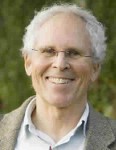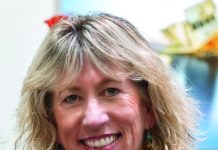Of  John Steinbeck, Tide Pools, and Stars
John Steinbeck, Tide Pools, and Stars
There’s so much to do at this time of year. Holiday cards are coming in to our house but none have gone out. I’m in the final stages of doing revisions of my California history textbook, which has kept me very busy. Thus I had not intended to write my column this month and yet having reread parts of John Steinbeck’s “The Log from the Sea of Cortez” (1941) I felt compelled to pen it. John Steinbeck made me do it.
In 1940 Steinbeck and his friend from Monterey, “Dr.” Ed Ricketts (though a trained marine biologist, he had no Ph.D.) and a small crew voyaged from Monterey to the Sea of Cortez, or Gulf of California. They gathered marine specimens at numerous anchorages along the Baja peninsula, including Cabo Pulmo, about which I wrote my previous column. While the crew’s collecting and interactions with locals in coastal Mexican towns and cantinas makes for absorbing reading, in these pages I encountered a Steinbeck previously unknown to me. While not an authority on the writer, I’ve read many of his works, visited the Steinbeck museum and home in Salinas, and poked around his Pacific Grove cottage. On these road trip ventures my wife and I have listened to audio tapes and compact discs of several of his books, including “Travels with Charley in Search of America” and “Tortilla Flat.” These works brim with unforgettable character sketches and local color tinctured with humor sprinkled here and there. Not until I read “The Log from the Sea of Cortez,” however, did I meet Steinbeck the amateur marine biologist and philosopher of the sea world and all that envelops it.
Toward the end of that read, Steinbeck reflects on what this Pacific excursion has taught him about the natural world and humankind’s place within it. “The disappearance of plankton, although the components are microscopic, would probably in a short time eliminate every living thing in the sea and change the whole of man’s life. . . . One [species of marine life] merges into another . . . until what we know as life meets and enters what we think of as non-life; barnacle and rock, rock and earth, . . . And the units nestle into the whole and are inseparable from it. . . . [O]ne thing is all things–plankton, a shimmering phosphorescence on the sea and the spinning planets and an expanding universe, all bound together by the elastic string of time. It is advisable to look from the tide pool to the stars and then back to the tide pool again.”
This holiday season as we search the night sky for constellations and listen for the ebb and flow of Laguna tides washing over rock pools and sand, we might recall Steinbeck’s meditations on the oneness of the natural world of which we are all a part. Surely he is speaking to us across decades about what is important. As Lagunans, his words resonate with many of us when he wrote in “The Log from the Sea of Cortez”: “One who was born by the ocean or has associated with it cannot ever be quite content away from it for very long.” Now I understand why Steinbeck spent so much time in and around Monterey, and why he came to Laguna Beach in the early 1930s, living at 504 Park Avenue while writing his classic novel “Tortilla Flat.”
In the face of dying reefs, plastic pollutants and over-fishing, our oceans are imperiled. Steinbeck’s message of oneness and reverence for our marine habitat is timelier now than ever. In the coming year, let’s each commit to taking some ongoing action. It could be as simple as eating seafood sustainably, or helping with the enforcement of the Marine Life Protection Act, or working on cleaning up and restoring Aliso Creek. You decide.
Tom Osborne is a retired Santa Ana College history professor, a former member of the city’s Environmental Committee and a recipient of the city’s Environmental Award.




